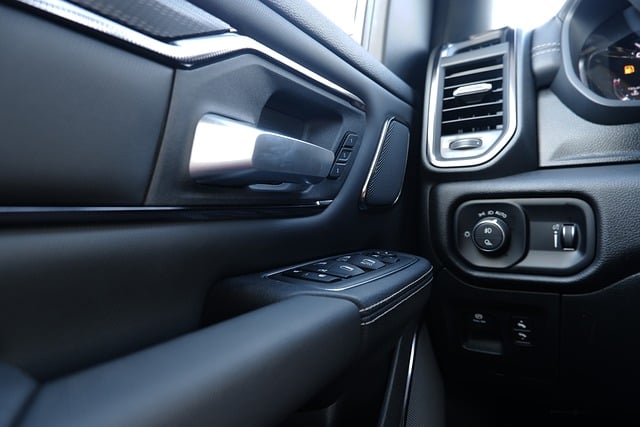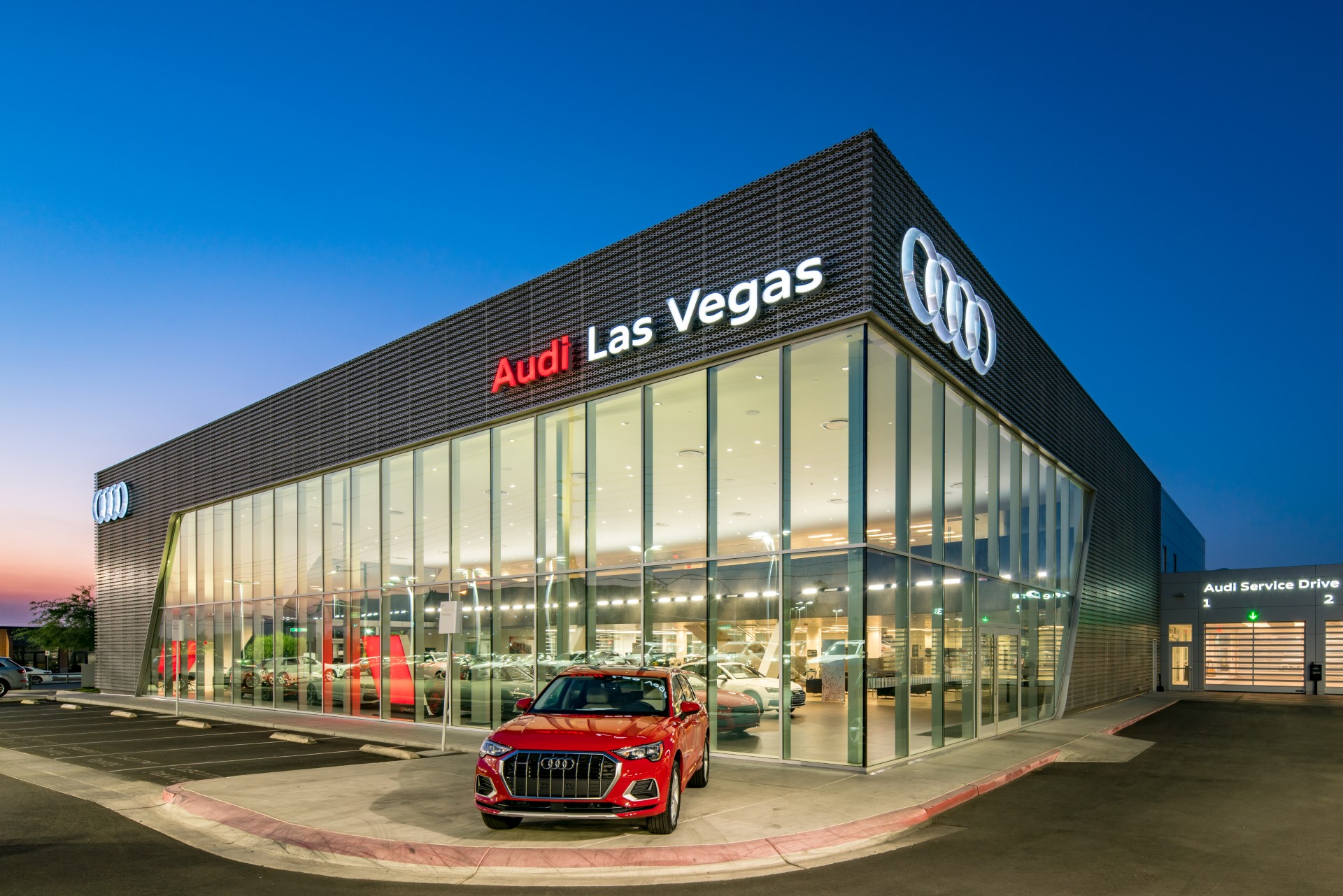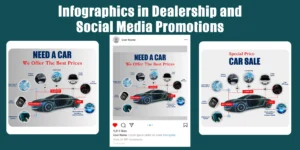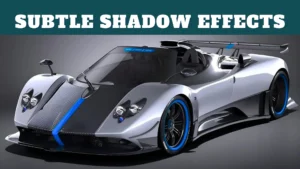In today’s digital age, where first impressions are formed online, the image your dealership Photography projects can make or break your business. When potential customers visit your website or browse your car listings, what do they see? Are they greeted with amateur snapshots or professional, high-quality photos?
Capturing the essence of your dealership through professional photography can greatly elevate your image and set you apart from the competition. With the right angles, lighting, and composition, professional photographers can showcase your inventory in the best possible way, highlighting the unique features and selling points of each vehicle.
But it’s not just about the cars themselves. Professional Dealership Photography also encompasses capturing the essence of your dealership as a whole. From the sleek showroom to the friendly staff, every aspect of your dealership can be highlighted through thoughtful visual storytelling.
By investing in professional photography, you’re able to create a strong and consistent brand image that resonates with your target audience. It instills trust, enhances credibility, and leaves a lasting impression. So, step up your game and let professional photography take your dealership’s image to new heights.
Table of Contents
ToggleHow professional photography can enhance your dealership’s image
By investing in professional photography, you’re able to create a strong and consistent brand image that resonates with your target audience. It instills trust, enhances credibility, and leaves a lasting impression. With professional photos, potential customers are more likely to perceive your dealership as professional, reliable, and worthy of their business.
Professional photography also allows you to showcase the unique features and selling points of each vehicle. High-quality images can bring out the details, craftsmanship, and overall appeal of the cars, making them more enticing to potential buyers. When customers see professional photos, they are more likely to believe that the vehicles are well-maintained and of high quality.
The role of photography in attracting and engaging customers
In today’s visually-driven society, captivating images have the power to attract and engage customers. When potential buyers are scrolling through countless online listings, it’s the eye-catching photos that grab their attention and entice them to click for more information.
Professional photography not only captures the attention of potential customers, but it also keeps them engaged. High-quality images can spark emotions, evoke desire, and create a sense of urgency. When customers see stunning photos of the cars you have to offer, they are more likely to imagine themselves behind the wheel, experiencing the thrill of driving.
Key elements of professional Dealership Photography
To create captivating automotive photos, professional photographers take into account several key elements. These elements include:
1. Lighting
Lighting is crucial in photography, and automotive photography is no exception. Proper lighting can enhance the details of the cars, create depth, and evoke certain moods. Professional photographers use a combination of natural and artificial lighting techniques to ensure the cars are showcased in the best possible light.
2. Composition
Composition refers to the arrangement of elements within the frame. Professional photographers carefully consider the angles, framing, and positioning of the cars to create visually pleasing images. They also take into account the surrounding environment to create a cohesive and compelling composition.
3. Detail Shots
In addition to overall shots of the vehicles, professional photographers also capture detailed shots that highlight specific features and craftsmanship. These close-up shots can showcase the quality of the materials, the precision of the design, and the unique selling points of each car.
Tips for selecting a professional photographer for your dealership
When selecting a professional photographer for your dealership, it’s important to consider their experience, portfolio, and expertise in automotive photography. Here are some tips to help you choose the right photographer:
1. Review their Portfolio
Take the time to review the photographer’s portfolio and see if their style aligns with your dealership’s vision. Look for consistency in their work, attention to detail, and the ability to capture the essence of the cars.
2. Check for Automotive Photography Experience
While some photographers may excel in portrait or landscape photography, automotive photography requires a unique skill set. Look for photographers who have experience in the automotive industry and understand how to showcase cars in the best possible way.
3. Consider Their Equipment
Professional automotive photography requires specialized equipment, such as high-resolution cameras, wide-angle lenses, and lighting equipment. Make sure the photographer has the necessary tools to capture high-quality images of your vehicles.
How to prepare your dealership for a professional photoshoot
To ensure a successful photoshoot, it’s important to properly prepare your dealership. Here are some steps you can take to get ready:
1. Clean and Detail the Vehicles
Before the photoshoot, thoroughly clean and detail each vehicle to ensure they look their best. This includes washing, waxing, and polishing the exterior, as well as cleaning the interior. Pay attention to every detail, from the tires to the dashboard, to create a polished and professional look.
2. Stage the Environment
In addition to the vehicles, consider staging the environment to create a visually appealing backdrop. Clear any clutter, attractively arrange the cars, and add any props or accessories that complement the overall aesthetic.
3. Coordinate with the Photographer
Communicate with the photographer beforehand to discuss your vision, goals, and any specific shots you’d like to capture. Provide them with a detailed schedule and ensure that all necessary arrangements are made for the photoshoot.
Utilizing professional photography in your dealership’s marketing materials
Professional photography can be utilized in various marketing materials to enhance your dealership’s image and attract potential customers. Here are some ways you can incorporate professional photos:
1. Website and Online Listings
Ensure that your website and online listings feature high-quality, professional photos of your vehicles. These images should accurately represent the cars and create a positive first impression for potential buyers.
2. Social Media Marketing
Use professional photos in your social media marketing campaigns to showcase your inventory and engage with your audience. Stunning images can generate likes, comments, and shares, increasing your dealership’s visibility and reach.
3. Print Marketing Materials
Incorporate professional photos in your print marketing materials such as brochures, flyers, and advertisements. These visuals can grab attention, convey professionalism, and leave a lasting impression on potential customers.

Examples of successful dealership marketing campaigns using professional photography
Several dealerships have successfully utilized professional photography in their marketing campaigns to elevate their image and drive sales. Here are a few examples:
1. XYZ Motors: “Experience the Luxury”
XYZ Motors used professional photography to highlight the luxurious features of their high-end vehicles. The high-quality images showcased the elegance and sophistication of the cars, attracting affluent buyers and increasing sales.
2. ABC Auto: “Adventure Awaits”
ABC Auto incorporated professional photography to create an adventurous and exciting image. The photos captured the vehicles in scenic locations, evoking a sense of wanderlust and appealing to adventure-seeking customers.
3. 123 Motors: “Power and Performance”
123 Motors focused on showcasing the power and performance of their sports cars through professional photography. The dynamic shots captured the cars in action, highlighting their speed and agility, and attracting sports car enthusiasts.
The impact of professional photography on online listings and sales
Investing in professional photography for your dealership’s online listings can have a significant impact on sales. Studies have shown that listings with high-quality photos receive more views, generate more leads, and ultimately result in higher conversion rates.
When potential buyers see professional photos of your vehicles, they are more likely to trust the accuracy of the listings and feel confident in their decision to inquire or make a purchase. High-quality images create a positive perception of your dealership and increase the perceived value of the cars.
What is dealership photography?
Dealership photography refers to the practice of capturing high-quality photographs of vehicles to showcase them in online listings or marketing materials. These photos are taken by professional photographers who specialize in automotive photography and are usually done in a controlled environment to ensure the best possible outcome.
Dealership photography plays a crucial role in attracting potential buyers and generating interest in the vehicles being sold. It allows potential customers to get a detailed visual representation of the cars, trucks, or motorcycles available for purchase, helping them make informed decisions before visiting the dealership in person.
Why is dealership photography important?
Dealership photography is important for several reasons. Firstly, high-quality photos can significantly enhance the appearance of the vehicles, making them more appealing to potential buyers. Clear, well-lit images can highlight the features and details of the vehicles, increasing the chances of generating interest and inquiries.
In addition, dealership photography helps build trust and credibility. When potential customers see professional, well-crafted photos, it gives them confidence in the dealership and the quality of the vehicles they have for sale. It shows that the dealership takes pride in its inventory and is committed to providing accurate representations of its products.
Furthermore, in the digital age, where the majority of car searches begin online, dealership photography is essential for standing out from the competition. Eye-catching visuals can grab attention and drive traffic to the dealership’s website or listings, increasing the likelihood of potential customers visiting the showroom or contacting the dealership for more information.
What equipment is needed for dealership photography?
To capture high-quality dealership photos, professional photographers typically use a range of specialized equipment. Here are some essential tools they may utilize:
- DSLR or mirrorless camera: A high-resolution camera with manual controls allows photographers to adjust settings and capture detailed images.
- Various lenses: Different lenses are used to capture various angles and details, such as wide-angle lenses for interior shots and telephoto lenses for close-ups.
- Tripod: A sturdy tripod helps stabilize the camera, reducing the risk of blurry images and allowing for consistent framing.
- External lighting: Additional lighting equipment, such as flashes or studio lights, may be used to properly illuminate the vehicles and eliminate harsh shadows.
- Backdrop or staging materials: Depending on the desired look, photographers may use backdrops, props, or staging materials to create an appealing setting for the vehicles.
Can I take dealership photos with a smartphone?
While smartphones have made significant advancements in camera technology, they may not always produce the same level of quality as professional-grade cameras. However, if you don’t have access to professional equipment or simply want to take some quick snapshots, smartphones can still be used to capture dealership photos.
To maximize the results when using a smartphone, consider the following tips:
- Use natural light: Shoot the vehicles in well-lit areas or outdoors during daylight hours to ensure good lighting conditions.
- Keep the vehicle clean: Ensure the vehicles are clean and free of dirt or smudges before taking photos.
- Use the highest resolution: Set your smartphone to capture photos at the highest resolution available to maintain image quality.
- Use editing apps: Enhance your photos using editing apps to adjust brightness, contrast, and other settings.
- Experiment with composition: Try different angles and perspectives to find the most visually appealing shots.
Should I hire a professional photographer for dealership photography?
While it is possible to take dealership photos yourself or with the help of staff members, hiring a professional photographer can offer several advantages. Professional photographers have the expertise and equipment to capture high-quality images that can make a significant impact on your dealership’s marketing efforts.
Here are a few reasons why hiring a professional photographer can be beneficial:
- Expertise: Professional automotive photographers understand how to showcase vehicles in the best possible way, highlighting their unique features and capturing attention.
- Equipment: Professional photographers have specialized equipment, including high-quality cameras, lenses, and lighting gear, to ensure optimal results.
- Consistency: Professionals can provide consistent results across all your dealership’s inventory, ensuring a cohesive and appealing visual presentation.
- Time-saving: Hiring a professional allows you to focus on other aspects of your dealership while leaving the photography in capable hands.
- Editing and retouching: Professional photographers often provide post-processing services, ensuring that your photos look their best before being used in marketing materials.
How much does dealership photography cost?
The cost of dealership photography can vary depending on several factors, including the location of the dealership, the number of vehicles to be photographed, and the specific services required. Generally, professional photographers charge based on an hourly rate or a per-vehicle rate.
It’s important to consider that hiring a professional photographer is an investment in your dealership’s marketing efforts. High-quality photos can significantly impact the perception of your inventory and ultimately attract more potential buyers. While the cost may vary, it’s important to choose a photographer who can deliver the level of quality and expertise that aligns with your dealership’s goals and budget.
When budgeting for dealership photography, consider the potential return on investment. The increased interest and inquiries generated by high-quality photos can lead to more sales and revenue for your dealership, making it a worthwhile expense.
What are some tips for capturing great dealership photos?
Here are some tips to help you capture great dealership photos:
- Prepare the vehicles: Clean the vehicles thoroughly, both inside and out, before taking photos. Remove any personal items or clutter that may distract from the vehicle itself.
- Choose the right location: Find a well-lit area with a clean and uncluttered background. Consider using a dedicated indoor studio or outdoor space to ensure optimal lighting conditions.
- Use a variety of angles: Capture the vehicles from different angles to showcase their unique features and give potential buyers a comprehensive view.
- Highlight key details: Focus on capturing close-up shots of important features such as the interior, exterior styling, and any special features or accessories.
- Properly stage the vehicles: Pay attention to the vehicle’s positioning and ensure that it is presented appealingly. Consider using props or backdrops to create an attractive setting.
- Pay attention to lighting: Use natural or artificial lighting to properly illuminate the vehicles. Avoid harsh shadows or overly bright highlights.
- Edit and retouch: After capturing the photos, use editing software to enhance the images, adjusting brightness, contrast, and colors if needed.
What are some common mistakes to avoid in dealership photography?
Here are some common mistakes to avoid when capturing dealership photos:
- Poor lighting: Avoid capturing photos in dark or poorly lit areas. Insufficient lighting can make the vehicles appear unappealing and obscure important details.
- Cluttered backgrounds: Choose a clean and uncluttered background, free from distractions that may draw attention away from the vehicles.
- Overexposure or underexposure: Properly expose the images to ensure that details are visible and colors are accurate. Avoid photos that are too bright or too dark.
- Blurry images: Use a tripod or stable support to avoid camera shake and ensure sharp, clear images.
- Not showcasing key features: Highlight the unique features and selling points of each vehicle, such as interior amenities or performance capabilities.
- Inconsistent quality: Strive for consistency in terms of image quality and composition across all of your dealership’s inventory. This helps maintain a professional and cohesive visual presentation.
How can dealership photos be used in marketing?
Dealership photos can be used in various marketing channels to attract potential buyers and drive sales. Here are some ways to utilize dealership photos in your marketing efforts:
- Online listings: Use the photos in online vehicle listings on your dealership’s website and third-party platforms. High-quality visuals can significantly increase engagement and inquiries.
- Social media: Share the photos on social media platforms to showcase your inventory and attract a wider audience. Consider using platforms like Instagram or Facebook, which are popular for car enthusiasts.
- Email marketing: Include dealership photos in your email marketing campaigns to entice recipients and increase click-through rates. Use appealing visuals to highlight special offers or new arrivals.
- Print materials: Incorporate dealership photos in printed brochures, flyers, or mailers to provide potential customers with a tangible representation of your inventory.
- Online advertisements: Use the photos in online advertisements, such as banner ads or Google AdWords campaigns, to capture attention and drive traffic to your dealership’s website or listings.
- Vehicle detail pages: Enhance your website’s vehicle detail pages with high-quality photos to provide potential buyers with a comprehensive visual representation of each vehicle.
How can I protect my dealership photos from unauthorized use?
Protecting your dealership photos from unauthorized use is important to maintain the integrity of your brand and prevent others from using your images without permission. Here are some steps you can take to protect your photos:
- Watermark your photos: Adding a visible watermark to your photos can deter unauthorized use by making it difficult for others to remove or crop out your branding.
- Include copyright information: Embed copyright information in the metadata of your photos. This can serve as a reminder that the images are protected by copyright and should not be used without permission.
- Monitor online platforms: Regularly search for your dealership’s photos online to identify any unauthorized use. If you find your photos being used without permission, contact the website or platform to request removal.
- Create licensing agreements: When sharing your photos with third parties, such as online platforms or advertising agencies, ensure that you have clear licensing agreements in place that specify how the photos can be used and by whom.
- Register your copyright: Consider registering your dealership photos with the appropriate copyright authorities to establish a legal record of ownership and provide additional protection.
How often should dealership photos be updated?
It is recommended to update dealership photos regularly to ensure that your inventory is accurately represented and to keep your marketing materials fresh and engaging. The frequency of updates may depend on factors such as the size of your inventory, the rate of turnover, and any significant changes in vehicle appearance or features.
As a general guideline, consider updating your dealership photos at least once a year or whenever there are significant changes to your inventory. This can include new vehicle models, updated features, or a change in branding or dealership appearance.
Regularly updating your photos demonstrates that your dealership is actively engaged in providing accurate and up-to-date information to potential buyers. It also helps maintain a sense of credibility and professionalism in your marketing efforts.
Can I use stock photos for my dealership’s inventory?
While stock photos can be a convenient and cost-effective option, it is generally recommended to use actual photos of your dealership’s inventory whenever possible. Stock photos may not accurately represent the specific vehicles you have available, potentially leading to customer dissatisfaction or confusion.
However, there may be instances where using stock photos can be acceptable. For example, if you have a limited selection of a particular vehicle model, or if you are promoting a specific brand or feature that is consistent across different vehicles, using stock photos may be a viable option.
If you do use stock photos, make sure to clearly disclose that the images are for illustrative purposes and may not represent the actual vehicles in your inventory. Provide detailed and accurate written descriptions to complement the images and ensure transparency with potential buyers.
Can I edit dealership photos to enhance their appearance?
Editing dealership photos is a common practice to enhance their overall appearance and make them more visually appealing. However, it’s important to strike a balance between enhancing the images and maintaining an accurate representation of the vehicles.
Here are some common editing techniques used in dealership photography:
- Brightness and contrast adjustments: Adjusting the brightness and contrast can help bring out details and make the photos more visually appealing.
- Color correction: Correcting color casts or adjusting saturation levels can ensure that the photos accurately represent the true colors of the vehicles.
- Removing distractions: Removing minor imperfections or distractions, such as dust or small blemishes, can improve the overall appearance of the photos.
- Cropping and framing: Cropping the photos and adjusting the framing can help highlight important details and create a more visually balanced composition.
- Sharpening: Applying selective sharpening techniques can enhance the clarity and sharpness of the images without making them appear overly processed.
When editing dealership photos, it’s important to maintain transparency and avoid misleading potential buyers. The edited images should still provide an accurate representation of the vehicles and their condition.
What are the benefits of using 360-degree photography for dealerships?
Using 360-degree photography in dealership listings can provide several benefits for both dealerships and potential buyers. Here are some advantages of using this technology:
- Enhanced engagement: 360-degree photos allow potential buyers to interactively explore the vehicles, creating a more engaging and immersive experience compared to traditional static photos.
- Increased transparency: 360-degree photos provide a comprehensive view of the vehicle, allowing potential buyers to see every angle, both inside and out. This transparency can help build trust and confidence in the dealership.
- Reduced in-person visits: With 360-degree photos, potential buyers can have a more detailed understanding of the vehicle’s condition and features before visiting the dealership in person. This can save time for both the customers and the dealership.
- Competitive advantage: Utilizing 360-degree photos sets your dealership apart from competitors who may only offer traditional static photos. It shows that your dealership is embracing innovative technologies and providing a modern, customer-centric experience.
- Extended reach: 360-degree photos can be shared on various platforms, including social media and third-party websites. This wider reach increases the visibility of your inventory and attracts potential buyers who may not have otherwise engaged with traditional photos.
What is the ideal resolution for dealership photos?
The ideal resolution for dealership photos depends on the specific usage and platform where the images will be displayed. Here are some general guidelines:
- Website and online listings: For most web-based platforms, a resolution of 1920 pixels wide by 1080 pixels high (also known as Full HD or 1080p) is sufficient. This resolution provides good image quality while still maintaining a manageable file size for quick loading times.
- Print materials: If you plan to use the photos in printed materials, such as brochures or flyers, a higher resolution is recommended. Aim for a minimum of 300 dots per inch (dpi) to ensure crisp and detailed prints.
- Large displays or billboards: If you intend to display the photos on large screens or billboards, a higher resolution is required to maintain image quality at a larger scale. Consult with a professional photographer or graphic designer for specific recommendations based on your display’s requirements.
It’s important to strike a balance between image quality and file size. Large file sizes may slow down website loading times or pose challenges when sharing via email or other digital platforms. Consider compressing the images without compromising too much on quality to ensure optimal performance.
How can I optimize dealership photos for online listings?
Optimizing dealership photos for online listings is essential to ensure fast loading times and provide a positive user experience. Here are some tips for optimizing your photos:
- Resize the images: Resize the photos to the appropriate dimensions for online listings. Use image editing software or online tools to ensure the images are not larger than necessary.
- Compress the images: Compress the images to reduce file size without significant loss of quality. Several online tools or image editing software have compression features to help optimize your photos.
- Use the correct file format: Save the photos in a web-friendly file format, such as JPEG, for online use. Avoid using uncompressed formats like TIFF or BMP, which can result in larger file sizes.
- Optimize alt tags: Use descriptive alt tags for each photo to improve accessibility and assist with search engine optimization (SEO).
- Consider image caching: Implement image caching techniques on your website to improve loading times for returning visitors. Caching allows the browser to store and retrieve the images more efficiently.
Can I use dealership photos taken by the manufacturer or previous owner?
While it may be tempting to use photos provided by the manufacturer or previous owner, it is generally recommended to take your dealership photos whenever possible. Using your own photos ensures that the images accurately represent the specific vehicles you have available for sale.
Manufacturer-provided photos may not reflect the exact specifications or features of the vehicles you have in stock. Similarly, photos taken by previous owners may not accurately represent the current condition or appearance of the vehicles.
By taking your own dealership photos, you have full control over the quality, composition, and accuracy of the images. This helps build trust with potential buyers and ensures that they get an authentic representation of the vehicles you have available.
Can dealership photos be used for pre-owned vehicles?
Absolutely! High-quality dealership photos are equally important for pre-owned vehicles as they are for new ones. Well-captured photos can be even more crucial when it comes to pre-owned vehicles, as potential buyers may have more concerns about the condition and appearance of used cars.
When photographing pre-owned vehicles, it’s important to accurately represent their condition. Be transparent about any imperfections or wear and tear, as this helps manage customer expectations and build trust. Highlight the unique features and the overall quality of the pre-owned vehicles through clear and detailed photos.
By providing high-quality photos of pre-owned vehicles, you can attract potential buyers, increase their confidence in the vehicles, and ultimately facilitate a successful sale.
What are the legal considerations when using dealership photos?
When using dealership photos, it’s important to consider the legal aspects to avoid copyright infringement or other legal issues. Here are some key legal considerations:
- Copyright ownership: Ensure that you have the necessary rights and permissions to use the photos. If you hire a professional photographer, make sure to clarify the ownership and usage rights in a contract or licensing agreement.
- Model releases: If there are recognizable individuals in the photos, obtain their consent through signed model releases. This ensures that you have permission to use their likeness for commercial purposes.
- Trademark infringement: Be cautious when including brand logos or trademarks in your photos, as unauthorized use can potentially infringe on intellectual property rights. Obtain permission or use generic alternatives whenever possible.
- Privacy considerations: Respect individuals’ privacy rights when capturing dealership photos. Avoid including personal information or identifiable details that may infringe on privacy rights.
If you have any concerns or questions regarding the legal aspects of using dealership photos, consult with a legal professional who specializes in intellectual property and copyright law.
Conclusion: Investing in professional photography for a competitive edge
In today’s competitive dealership industry, capturing the essence of your dealership through professional photography is crucial. It elevates your image, attracts and engages customers, and sets you apart from the competition. By investing in high-quality photos, you create a strong and consistent brand image that resonates with your target audience.
So, step up your game and let professional photography take your dealership’s image to new heights. With captivating images that highlight the unique features and selling points of each vehicle, you’ll create a lasting impression that drives sales and sets your dealership apart as a trusted and reliable choice for car buyers.










